Feeding Chart for Babies: A Guide to Infant Feeding in the First Year
55 hours of research 4 minute read

Embarking on the incredible journey of parenthood marks the onset of a joyous adventure, as you cradle your precious bundle of joy in your arms. The first year of your baby's life is a tapestry of magical moments – from the first smile to those tiny, tentative steps. However, amidst the enchanting moments lie the challenges that new parents face, and chief among them is navigating the intricate world of feeding.
As a new parent, you've likely discovered that caring for your little one involves more than just the basics of eating, sleeping, and diaper changes. It's a delicate balance of love, nurture, and meticulous decision-making. If you're pondering over questions about feeding schedules, nutritional choices, and ensuring your baby's healthy development, fear not – this guide is tailor-made for you!
In the following pages, we'll unravel the mysteries of appropriate food choices for your newborn, guiding you through their first moments until they reach the significant milestone of turning one. Join us as we explore the realms of nourishment, offering insights and advice to help you foster healthy eating patterns for your little one. If you're eager to embark on this nutritional journey with confidence, read on!
Recommended Feeding Guide for the First Year
Welcome to the incredible journey of parenthood, where each day brings discoveries and challenges, especially when it comes to feeding your precious bundle of joy. As you embark on this rewarding experience, it's essential to navigate the recommended feeding practices to ensure your baby receives the optimal nutrition for healthy growth and development. In this guide, we'll explore the trusted recommendations from reputable sources like the American Academy of Pediatrics (AAP) and other medical professionals, providing valuable insights into the feeding journey during your baby's first year.
The American Academy of Pediatrics (AAP) serves as a reliable guide for parents, recommending exclusive breastfeeding for the first 6 months of a baby's life, followed by continued breastfeeding alongside the introduction of solid foods up to 12 months and beyond.
Formula Feeding Alternatives:
For parents who opt for formula feeding, it's crucial to choose the right formula for your baby. Goat or cow's milk-based formulas are considered suitable alternatives to breast milk for infants under 1 year of age, provided there are no allergic or digestive issues. Soy-based formulas are reserved for cases where cow's or goat's milk formulas are not viable, following medical recommendations.
Newborn Feeding Patterns:
Newborns have tiny tummies that require regular feedings day and night. From birth to 6 months, the majority of a baby's nutrition should come from breast milk or formula. Breastfed babies may feed more frequently due to the quicker digestion of breast milk compared to formula. It's crucial to recognize the unique needs of your baby, taking into account factors such as age, weight, and appetite. Consulting with your pediatrician is key to establishing a personalized feeding guide.
Premature Baby Formula Feeding

Premature babies, born before 37 weeks of gestation, often have distinct nutritional needs that require specialized attention. Consulting with healthcare professionals is crucial to determine the most appropriate feeding strategy. Below are key considerations:
Specialized Premature Infant Formulas:
Premature baby formulas are designed to meet the unique nutritional requirements of preterm infants. These formulas typically have higher levels of protein, calories, vitamins, and minerals to support their rapid growth and development.
Here’s Top-pick formulas for premature babies at Organic Life Start:
| Formula Name | Key Features |
|---|---|
| HiPP HA Germany Stage PRE |
✅ Hydrolyzed milk proteins reduce allergic reactions ✅ No sugar, no corn syrup, no soy ✅ Contains Probiotics & Prebiotics ✅ Popular for constipated babies |
| Holle Bio Stage PRE |
✅ Demeter biodynamic certified ✅ No sugar, no corn syrup, no soy ✅ Clean formula ingredients ✅ Holle's most popular cow formula |
| Holle Goat Stage Pre |
✅ 100% Organic Formula ✅ No sugar, no corn syrup, no soy ✅ Clean formula ingredients ✅ Popular for babies allergic to cow's milk |
Consultation with Healthcare Professionals:
Healthcare providers, including neonatologists and dietitians, play a pivotal role in establishing a suitable feeding plan for premature infants. They consider factors such as the baby's weight, gestational age, and any existing health condition.
Premature Baby Formula Feeding Chart:
| Age (weeks) | Type of Formula | Daily Feedings | Feeding Amount per Session | Total Daily Volume (mL) | Additional Notes |
|---|---|---|---|---|---|
| 0-2 | Preterm Formula | 8-10 | 20-30 mL | 160-300 mL | Begin with smaller volumes, adjusting based on tolerance. |
| 2-4 | Preterm Formula | 8-10 | 30-40 mL | 240-400 mL | Gradually increase volumes based on weight gain and tolerance. |
| 4-8 | Preterm Formula | 7-9 | 40-60 mL | 280-540 mL | Monitor for signs of intolerance or allergies. |
| 8-12 | Preterm/Post-discharge Formula | 6-8 | 60-80 mL | 360-640 mL | Consider transitioning to post-discharge formula as advised by healthcare professionals. |
Note: This is a general guideline; individual babies may have different needs. Always follow the recommendations provided by healthcare professionals.
Nurturing premature babies requires a delicate and informed approach to feeding. By understanding the specialized needs of preterm infants and collaborating closely with healthcare providers, parents can create a feeding plan that supports optimal growth and development. The sample premature baby formula feeding chart serves as a helpful starting point, but it's crucial to tailor feeding practices to the unique requirements of each tiny miracle. In this journey, informed decisions and the support of healthcare professionals are invaluable for ensuring the best possible outcomes for these resilient infants.
Feeding Chart for Breastfed and Formula-Fed Babies:
Here's a comprehensive feeding chart outlining the recommended frequency and quantity of nursing or formula feeding based on your baby's age per day. Remember, these are general guidelines, and consulting with your pediatrician is essential to tailor the feeding plan to your baby's unique needs.
| Age (Months) | Breastfeeding Frequency | Formula Feeding Amount | Solid Food |
|---|---|---|---|
| 0-1 | 8-12 times per day | 2-3 ounces per feeding | - |
| 1-3 | 7-9 times per day | 4-5 ounces per feeding | - |
| 3-6 | 6-8 times per day | 4-8 ounces per feeding | 2 tbsp of solid food |
| 6-9 | 6-8 times per day | 6-8 ounces per feeding | More Solid food |
| 9-12 | 4-6 times per day | 7-8 ounces per feeding | More Solid food |
Breastfeeding is often hailed as the gold standard for infant nutrition, as the phrase goes, "breast is best." The unique composition of breast milk provides infants and toddlers with optimal nutrition, supporting their growth and immune system development. While acknowledging the benefits of both breast milk and formula, understanding the intricacies of breastfeeding is crucial for parents to provide the best care for their little ones. This guide explores breastfeeding from the first hour after birth to the transition into a more structured feeding schedule, offering evidence-based insights for confident parenting.
Frequency of Breastfeeding:
0-1-Month-Olds: Every 2-3 Hours
- Newborns have small stomach capacities and need frequent feedings.
- Establishing a feeding routine supports consistent nutrient intake.
1-3 Month Olds: Every 3-4 Hours
- As infants grow, the frequency of feedings extends, allowing longer gaps between sessions.
6-9 Month Olds: Every 4-6 Hours
- With the introduction of complementary solid foods, infants can sustain longer intervals between feedings.
Initiating Breastfeeding:
First Hour After Birth:
- Medical experts recommend initiating breastfeeding within the first hour after birth.
- Skin-to-skin contact during this time promotes bonding and helps the baby search for the breast while maintaining a comfortable body temperature.
Initiating Breastfeeding:
Importance of Colostrum:
- Colostrum, the earliest breast milk, is thick, concentrated, and rich in immunological support.
- Colostrum aids in protecting the baby from diseases during the critical first few days after birth.
- Source: American Pregnancy Association - Colostrum
Monitoring Breastfed Baby's Needs:
On-Demand Feeding:
- Newborns, whether breastfed or formula-fed, are recommended to eat on-demand, at least 8 to 12 times a day.
- Monitoring hunger cues is crucial for offering feeds when the baby desires them.
Self-Regulation:
- Newborns are adept at self-regulating their milk intake, and adjusting to their growing needs.
- A more consistent feeding schedule naturally emerges as the baby's stomach capacity increases.
Adjusting to Growing Needs:
Stomach Growth:
- As the baby grows, the stomach also expands, allowing for more milk intake in less time.
- A balanced and consistent feeding schedule emerges gradually, aligning with the baby's developmental stages.
Breastfeeding Data Table:
| Age (Months) | Frequency of Feedings | Notable Points |
|---|---|---|
| 0-1 | Every 2-3 hours | Frequent feeding to meet small stomach capacity |
| 1-3 | Every 3-4 hours | Gap between feedings extend slightly |
| 1-3 | Every 3-4 hours | Gap between feedings extend slightly |
| 6-9 | Every 4-6 hours | Introduction of solid foods; longer intervals between feeds |
Breastfeeding is a dynamic and evolving process that adapts to the baby's changing needs. By following these guidelines and consulting healthcare professionals, parents can confidently navigate the breastfeeding journey, ensuring the best start for their little ones.
The Importance of Vitamin D for Breastfed Babies:
It is indeed true that babies fed human milk may require additional vitamin D supplementation. While human milk is acknowledged as the optimal source of nutrients for infants, it often falls short in providing the recommended amount of vitamin D. Pediatricians commonly advise incorporating vitamin D supplements into the diet of babies exclusively or partially fed breast milk.
AAP Recommendations:
The American Academy of Pediatrics (AAP) recommends a minimum daily intake of 400 IU of vitamin D during the first few days of an infant's life. This vitamin plays a crucial role in calcium and phosphorus absorption, and deficiencies can lead to conditions like rickets and compromise bone health.
Understanding Formula Feeding: Guide For 0 - 12 months
Just like breastfeeding, formula feeding demands careful attention to the baby's needs. For formula-fed newborns, the feeding schedule is advised to be on demand, responding to hunger cues. Despite potential nights of uninterrupted sleep, adhering to a feeding schedule every 2-3 hours is crucial for meeting nutritional requirements.
Frequency of Feedings:
On average, formula-fed newborns consume between 8 and 12 feedings within a 24-hour period. However, the ideal amount of formula varies for each baby, emphasizing the importance of consulting with a pediatrician to tailor the feeding plan to the specific needs of the infant.
Top Baby Formulas for Your Infant's First Year
Now that we've tackled the frequency of feedings for infants in their first year, let's take a closer look at some high-quality infant formulas available on the market today. These premium organic baby formulas are thoughtfully formulated to meet the nutritional needs of babies in their first year of life. They provide essential nutrients and support healthy development for your little one. Whether supplementing breast milk or as a standalone feeding option, parents can trust in the quality and integrity of these trusted brands. Always consult with a healthcare professional before introducing new foods or formulas to your baby's diet.
✓ Demeter Certified (Organic++)
✓ Easy-to-Digest Goat Milk Formula
✓ Popular for babies allergic to cow's milk
Check PricePopular With Parents Because: For babies who may have sensitivities to cow's milk, Holle Goat Dutch formula offers a gentle alternative. Made with organic goat milk, this formula is easily digestible and provides a rich source of nutrients, including calcium, vitamins, and minerals essential for healthy growth and development. Holle's commitment to sustainable farming practices ensures that your baby receives the highest quality ingredients in every bottle.
✓ Made from Organic Cow's Whole Milk
✓ 100% Vegetarian-friendly (Contains Plant-Based DHA and ARA)
✓ EU and British Soil Association Certified Organic
Check PricePopular With Parents Because: Made with locally sourced British organic milk, Kendamil Organic is crafted to provide babies with the nutrition they need for optimal growth and development. Their formulas contain natural fat source of Milk Fat Globule Membrane (MFGM), essential vitamins, and minerals, supporting brain development, immune function, and overall health. Kendamil is committed to sustainability and ethical sourcing, making it a trusted choice for environmentally conscious parents.
✓ 100% Organic formula
✓ With Added Prebiotics and Probiotics to Mimic Breast Milk
✓ HiPP's most popular formula
Check PricePopular With Parents Because: HiPP Dutch formula is crafted with care to mimic the composition of breast milk closely. Made with organic ingredients, including lactose as the primary carbohydrate, it provides essential vitamins, minerals, and Omega-3 and Omega-6 fatty acids to support your baby's health. HiPP's gentle processing methods help preserve the natural goodness of the ingredients, ensuring optimal nutrition for your little one.
Bonding Through Formula Feeding:
Contrary to common misconceptions, bottle feeding can still be a remarkable opportunity for parents to bond with their infants. Formula-fed babies, in particular, tend to feel more secure when the majority of their feedings are given by their primary caregivers.
Fostering Closeness:
Feeding time, even from a bottle, fosters closeness between parent and child. It is a moment to savor, holding your little one close, incorporating skin-to-skin contact, engaging in meaningful conversations, and connecting through eye contact.
Recommendations for the First Days of Life:
During the initial days of your newborn's life, it is generally recommended to offer between 1 and 2 ounces of infant formula every 2 to 3 hours (if not receiving breast milk). As your baby's tummy expands and can hold more milk, the feeding frequency typically decreases to every 3 to 4 hours. Monthly adjustments, such as adding an ounce of formula per feeding, accommodate the growing appetite of your baby.
The importance of vitamin D supplementation for breastfed babies outlines the nuances of formula feeding and highlights the potential for meaningful bonding during feeding moments. Always consult with your pediatrician for personalized guidance that aligns with the unique needs of your infant.
Understanding Your Formula-Fed Baby's Needs:
Determining how much milk your formula-fed baby needs can be both an art and a science. While baby feeding charts offer guidance, your personal understanding of your child's unique feeding patterns is irreplaceable. The general recommendation for babies less than 1 month old is not to exceed an average of 32 ounces of formula in 24 hours. However, individual needs may vary, and any deviations from this norm should prompt consultation with your child's pediatrician.
Ensuring Adequate Milk Intake: Signs Your Baby is Getting Enough:
One of the common concerns for new parents is determining whether their baby is receiving sufficient nourishment. Breastfeeding can pose challenges in gauging the amount consumed, making bottle feeding a more straightforward method. Whether your baby is fed breast milk or formula, specific signs, such as steady weight gain, contentment, and appropriate diaper output, indicate a well-nourished baby.
Addressing Spit-Up Concerns and Digestive Issues:
Spit-up is a common occurrence after feedings, usually posing no significant concern. However, consistent vomiting might indicate underlying digestive issues, allergies, or medical problems, necessitating professional medical advice.
Responding to Hunger Cues and Growth Spurts:
Understanding your baby's hunger cues is crucial, especially during growth spurts. Young infants have small tummies and eat frequently. Recognizing hunger cues, such as increased fussiness or rooting, enables you to respond promptly to your baby's needs.
Debunking the Feeding Schedule Myth:
While the desire for a feeding schedule may be tempting, especially for better organization, research suggests that an on-demand feeding approach is more beneficial, especially during the first six weeks. A rigid feeding schedule may contribute to slow weight gain and early weaning in breastfed infants. Responsive feeding, based on cues, promotes healthier growth trajectories and positive cognitive outcomes.
Introducing Solid Foods:
Around the age of 6 months, your baby may exhibit signs of readiness for solid foods, as recommended by the AAP. These signs include excitement during mealtimes, improved motor skills, and an ability to sit up. However, it is crucial to wait until at least 4 months before introducing solids, as offering them earlier can pose health risks.
Safe and Nutritious Solid Foods for Your Baby:
When introducing solid foods, it is advisable to offer one new food at a time and wait a few days between introductions to monitor any potential allergies or intolerances. Healthy options include infant cereal, softly cooked, finely chopped or pureed vegetables, fruits, and meats, free of added sugar or salt. Offering a diverse range of foods alongside breast milk or formula contributes to early acceptance and sets the stage for healthy eating habits.
Navigating your baby's feeding journey involves continuous observation, responsiveness to cues, and a balanced introduction to solid foods. Always consult with your baby's healthcare provider for personalized advice aligned with your infant's unique needs and development.
Top Baby Formulas for Your Infant's First Year
Organic Life Start is committed to providing accurate, reliable, and trustworthy information to parents and caregivers. We carefully choose credible sources and follow a meticulous fact-checking process to uphold the highest standards in infant nutrition and parenting advice. To learn more about our dedication to accuracy, please explore our editorial guidelines.
Link To Sources


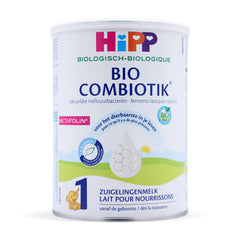
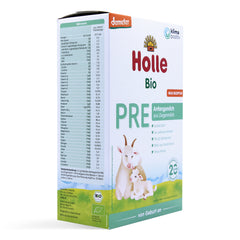
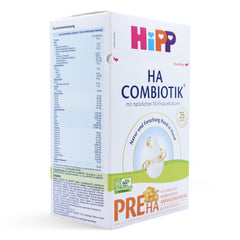
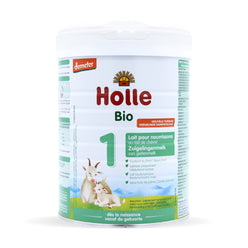
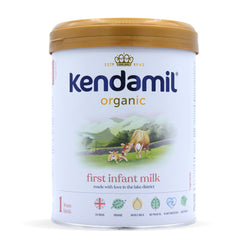
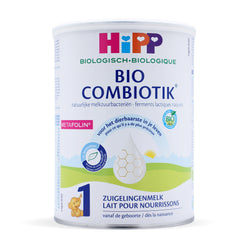






Ian -
As a first-time dad, this feeding chart has been a great aid for Marvin’s first year. Knowing exactly how much and how often he should eat at each stage makes me feel better. It’s good to see him grow gradually and cheerfully, which makes me feel like we’re on the right track. It’s a minor reference, but it makes me feel better as a new mom.
Shay -
November 20, 2025
As a first-time mom, I found the feeding chart quite helpful because I want to do the best for my little Frida. Everything still feels new and a little scary, so having a clear guide to follow makes me feel more stable. Knowing what was usual at each stage helped me relax and enjoy feeding time more instead of worrying over every ounce.
Angel -
October 23, 2025
I’ve always used homemade purees, but now I’m curious about trying store-bought organic options. Has anyone made the switch, and how did your baby like it?